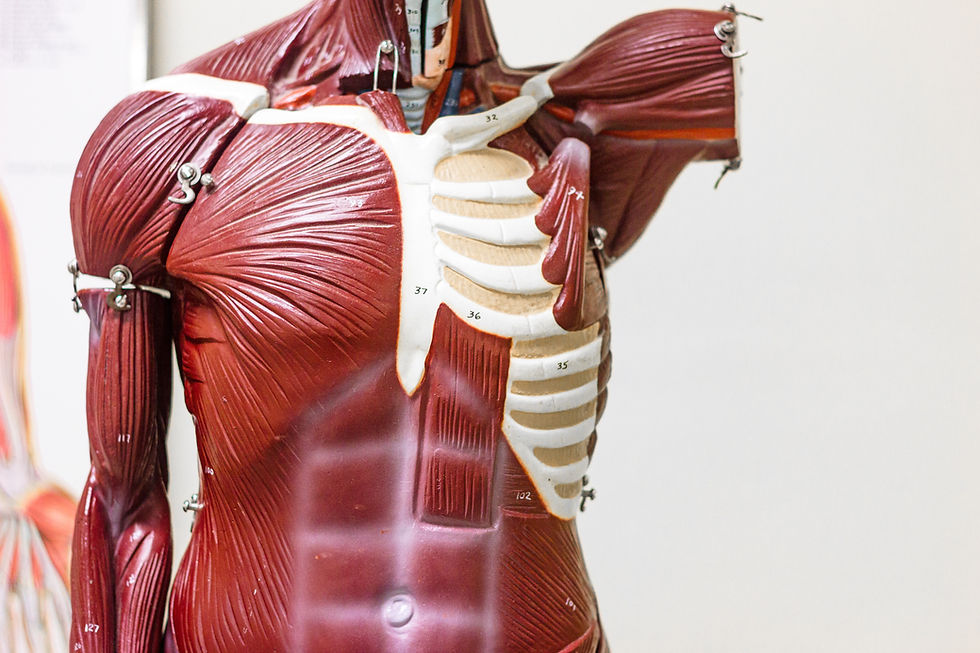From Anatomy to Energy: Exploring the Deep Connections in Yin Yoga
Our anatomy is intricately linked to our physiology. The functioning of our muscles, tendons, ligaments, and even our heart is governed by physiological processes. Without this complex "motherboard" operating behind the scenes, our muscles would be mere dead weight, devoid of purpose.
Physiology dictates our movements—it initiates, sustains, and modulates them. This becomes evident when we examine conditions such as Parkinson's disease, where the brain's inability to produce dopamine—a chemical vital for movement regulation—compromises fine motor control, resulting in tremors. Thus, our anatomy is a reflection of our underlying physiological processes.

Our physiology, in turn, is shaped by our environment. Nutrition and oxygen are the fuel for our physiological functions. Our bodies convert nutrients and oxygen into the essential materials that sustain us. Neurotransmitters like glutamate and adrenaline, produced optimally or under stress, respectively, are synthesized from these nutrients. Without these raw materials, and especially without oxygen, our survival would be immediately compromised. Our cognitive abilities, our consciousness, and our interactions with the world are all contingent upon these environmental inputs.
In yogic philosophy, we recognise that we are composed of both gross physical matter—elements like nitrogen, carbon, and oxygen, which are common throughout the universe—and energy. Initially, our yoga practice may focus heavily on the anatomical aspects, on understanding where each part should be and what sensations to expect. Over time, we might begin to perceive the subtler aspects of our physiology—the rhythm of our heartbeat, the flow of air into our lungs. These experiences, though still tied to our physical form, hint at a deeper connection.
As we delve further, we may transition from perceiving gross physical matter to sensing energy itself. In yogic lore, Shiva represents matter, while Devi symbolises energy. Experiencing Devi's presence allows us to tap into the transformative power of yoga. Shiva teaches that in the moments between breaths, we transcend our physical form. We become not just part of the world but a manifestation of everything around us.

With our yin yoga practice, we aim to deepen our exploration of physiology and it's interplay with our environment. Can we elevate our understanding of yoga to new heights? Can we experience the profound magic of Devi? This exploration is not just a study; it's a journey toward understanding the very essence of life and energy within us.
For more information our Yin Yoga Teacher Training, please visit - https://www.akramyoga.co.uk/50yin

Zahir Akram - eternal seeker
If you're eager to delve deeper into the world of yoga, we invite you to explore our Yoga Teacher Training program. Whether you're starting from scratch with our entry-level 200-hour course or seeking advanced knowledge with our 300-hour course, our training equips you with the skills to become a certified yoga teacher. However, this journey isn't limited to aspiring instructors alone. If you share the same passion for learning and desire to expand your understanding of the art you adore, like me, then this course is perfect for you.
Embrace the opportunity to deepen your love for yoga.
.png)

![Is Yoga a Religion? [Video]](https://static.wixstatic.com/media/c1de07_403e7c2368e54c4a8f7736bb1166951a~mv2.png/v1/fill/w_220,h_123,fp_0.50_0.50,q_95,enc_auto/c1de07_403e7c2368e54c4a8f7736bb1166951a~mv2.webp)










![Is Yoga a Religion? [Video]](https://static.wixstatic.com/media/c1de07_403e7c2368e54c4a8f7736bb1166951a~mv2.png/v1/fill/w_38,h_21,fp_0.50_0.50,q_95,enc_auto/c1de07_403e7c2368e54c4a8f7736bb1166951a~mv2.webp)








Comments